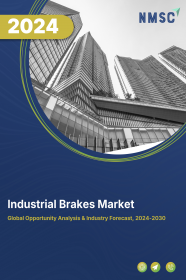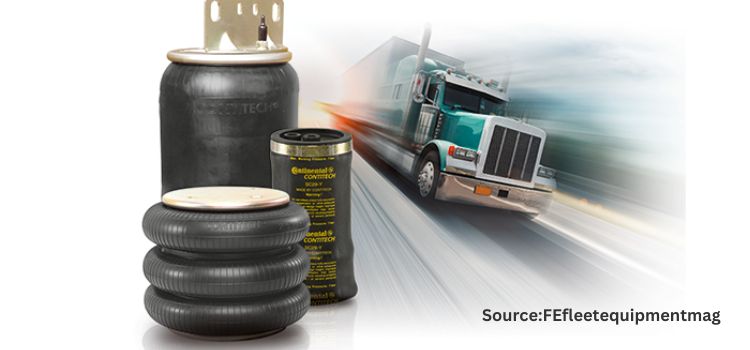
Industrial Brakes Market by Type (Mechanically Applied Brakes, Hydraulically Applied Brakes, Pneumatically Applied Brakes, Electrically Applied Brakes, Drum & Disc Brakes, and Spring Brakes), by Application (Holding Brakes, Dynamic & Emergency Brakes, and Tension Brakes), by End User (Metals & Mining, Constructing, Manufacturing, Entertainment, Marine & Shipping, and Others) - Global Opportunity Analysis and Industry Forecast, 2020 – 2030
US Tariff Impact on Industrial Brakes Market
Trump Tariffs Are Reshaping Global Business
Market Definition
The global Industrial Brakes Market was valued at USD 0.89 billion in 2019 and is predicted to reach USD 1.30 billion by 2030, with a CAGR of 3.3% from 2020-2030.
Industrial brakes are friction-based devices that control the movement of machine by absorbing their kinetic energy and establishing inertia, thereby leveraging the motion in industrial machineries through frictional force.
Industrial brakes play a vital role in enhancing operational efficiency of machineries, increase production capacity, and provide work-place safety. These brakes hold major applications in construction industry, manufacturing & processing industry, entertainment industry, metal & mining industry, and other industrial verticals.
Market Dynamics and Trends
The global industrial brakes market is gaining momentum over the forecast period, owing to emergence of smart manufacturing processes, and increasing penetration of robotics and automation in different industry verticals.
Furthermore, benefits offered by industrial braking systems such as increased safety, higher efficiency, enhanced productivity, smooth functioning of machineries, as well as increased capacities of holding and lifting payloads, are expected to supplement the growth of global industrial brakes market throughout the forecast period.
However, volatility in the prices of raw materials, and accessibility to raw materials are the factors limiting the growth of global industrial brakes market. Moreover, booming construction & mining industries, increasing demand from various industry verticals, and stringent government regulations regarding industrial safety, are the factors expected to propagate the growth of global industrial brakes market in coming future.
Market Segmentations and Scope of the Study:
The global industrial brakes market share has been analyzed based on type, application, end user and geography.
Based on type, the industrial brakes market is segmented into mechanically applied brakes, hydraulically applied brakes, pneumatically applied brakes, electrically applied brakes, drum & disc brakes, and spring brakes. Based on application, the industrial brakes market is divided into holding brakes, dynamic & emergency brakes, and tension brakes. Based on end user, the industrial brakes market is bifurcated into construction, manufacturing, entertainment, metals & mining, marine & shipping, and others. Geographic breakdown and analysis of each of the previously mentioned segments include regions comprising North America, Europe, Asia-Pacific, and RoW.
Geographical Analysis
North America is expected to dominate the global industrial brakes market throughout the forecast period, accounting for the highest market share. This is attributed to presence of key manufacturers, higher adoption of robotics and automation, as well as presence of well-established industrial sectors in this region.
Asia Pacific is expected to grow with the highest CAGR values in the global industrial brakes market, demonstrating lucrative segments for growth in the industrial brakes market throughout the forecast period. This is due to rapid industrialization, increased investment in manufacturing sector, and higher prevalence of mining activities.
Competitive Landscape
The industrial brakes market is highly competitive and consists of various market players such as Ringspann GmbH, Intsch Bubenzer GmbH, Altra Industrial Motion Corp., Akebono Brake Industry Co., Ltd., ANTEC, S.A., Eaton, Coremo Ocmea S.p.A., Carlisle Brake & Friction, SIBRE - Siegerland Bremsen GmbH and others. The key players are employing strategies such as product launches, acquisition, and technical collaboration, in-order to gain stronger position in the industrial brakes market.
For instance, in September 2019, Ringspann GmbH., one of the major players in industrial brakes market, introduced its new series of conventional and slimmer drum brakes. These drum brakes are horizontally mounted with thrustor, and are designed for braking torques of about 4,500 Nm. Additionally, these drum brakes can be configured as per consumer requirements.
In April 2020, DELLNER BUBENZER Group and its subsidiary PINTSCH BUBENZER GmbH., announced their acquisition over RIMA S.R.L., an Italian manufacturing company in the industrial brakes market, with an aim to establish monopoly in supplying industrial braking systems at global level, along with increasing the trade of power transmission products.
In May 2020, Altra Industrial Motion Corp., one of the key players in industrial brakes market, introduced its Stromag Series 600 Braking Systems for dam gates, with each brake providing 45 kNm of torque. The hydraulic powerplant built on this dam generates 18 MW electricity; the six steel gates weighing 100 tons and 27 m wide, are used to control the flow of river.
Key Benefits
-
The industrial brakes market report provides the quantitative analysis of the current market and estimations through 2020-2030 that assists in identifying the prevailing market opportunities to capitalize on.
-
The study comprises a deep dive analysis of the industrial brakes market trend including the current and future trends for depicting the prevalent investment pockets in the market.
-
The report provides detailed information related to key drivers, restraints, opportunities, and their impact on the industrial brakes market.
-
The report incorporates competitive analysis of the market players along with their market share in the global industrial brakes market.
-
The SWOT analysis and Porters Five Forces model is elaborated in the study of the industrial brakes market.
-
Value chain analysis in the industrial brakes market study provides a clear picture of the stakeholders’ roles.
Key Market Segments:
By Type
-
Mechanically Applied Brakes
-
Hydraulically Applied Brakes
-
Pneumatically Applied Brakes
-
Electrically Applied Brakes
-
Drum & Disc Brakes
-
Spring Brakes
By Application
-
Holding Brakes
-
Dynamic & Emergency Brakes
-
Tension Brakes
By End User
-
Metals & Mining
-
Constructing
-
Manufacturing
-
Entertainment
-
Marine & Shipping
-
Others
By Geography
-
North America
-
U.S.
-
Canada
-
Mexico
-
-
Europe
-
UK
-
Germany
-
France
-
Italy
-
Rest of Europe
-
-
Asia-Pacific
-
China
-
India
-
Japan
-
Australia
-
Rest of Asia-Pacific
-
-
RoW
-
UAE
-
Saudi Arabia
-
South Africa
-
Brazil
-
Remaining Countries
-
Key Players:
-
Altra Industrial Motion Corp.
-
Akebono Brake Industry Co., Ltd.
-
Carlisle Brake & Friction
-
ANTEC, S.A.
-
Eaton
-
Coremo Ocmea S.p.A.
-
intsch Bubenzer GmbH
-
SIBRE - Siegerland Bremsen GmbH
-
Ringspann GmbH
REPORT SCOPE AND SEGMENTATION:
|
Parameters |
Details |
|
Analysis Period |
2019–2030 |
|
Base Year Considered |
2020 |
|
Forecast Period |
2020–2030 |
|
Market Size Estimation |
Billion (USD) |
|
Market Segmentation |
By Type (Mechanically Applied Brakes, Hydraulically Applied Brakes, Pneumatically Applied Brakes, Electrically Applied Brakes, Drum & Disc Brakes, and Spring Brakes), by Application (Holding Brakes, Dynamic & Emergency Brakes, and Tension Brakes), by End User (Metals & Mining, Constructing, Manufacturing, Entertainment, Marine & Shipping, and Others) |
|
Geographical Segmentation |
North America (U.S., Canada, Mexico) Europe (UK, Germany, Italy, France, Rest of Europe), Asia-Pacific (China, Japan, India, Australia, Rest of APAC), Rest of the World (UAE, Saudi Arabia, South Africa, Brazil, Remaining countries) |
|
Companies Profiled |
Ringspann GmbH, Intsch Bubenzer GmbH, Altra Industrial Motion Corp., Akebono Brake Industry Co., Ltd., ANTEC, S.A., Eaton, Coremo Ocmea S.p.A., Carlisle Brake & Friction, SIBRE - Siegerland Bremsen GmbH |

















 Speak to Our Analyst
Speak to Our Analyst





















